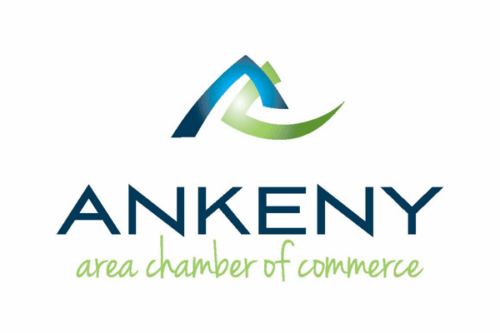A Call for Proposal (CFP) is more than just a request for submissions—it’s an opportunity to define your organization’s needs clearly and attract the right partners, vendors, or contributors to help achieve your goals. Whether you’re sourcing keynote speakers for your annual conference, seeking a new event management system, or looking for innovative ideas to tackle a community challenge, a well-written CFP is your first step toward success.
For associations and nonprofits, the stakes are often high. The right proposal can bring value to your members, streamline operations, or even drive mission-critical initiatives. However, writing a CFP can be challenging—balancing clarity with enough detail to attract high-quality responses.
This article will guide you through the process of crafting an effective CFP. You’ll learn why a clear and compelling CFP matters, what essential components to include, and tips for avoiding common pitfalls. By the end, you’ll have the tools to write a CFP that yields the best possible outcomes for your organization.
Why a Well-Written CFP Matters
Creating a call for proposal might seem like a straightforward task, but its quality can significantly impact the success of your project. A well-written CFP ensures you receive responses that are not only relevant but also aligned with your goals and expectations. Here’s why it matters:
- Attracts the Right Respondents: A clear and detailed CFP communicates exactly what you’re looking for, helping you attract vendors, speakers, or partners with the right expertise and qualifications.
- Saves Time and Effort: When your CFP is well-structured and explicit, it reduces back-and-forth clarifications and ensures respondents understand your expectations from the start.
- Improves Decision-Making: A strong CFP includes well-defined evaluation criteria, making it easier to compare proposals and select the best fit for your organization.
- Prevents Miscommunication: Ambiguities in your CFP can lead to confusion, misaligned proposals, or even legal issues. Clear guidelines minimize the risk of misunderstanding.
For example, consider an association seeking a keynote speaker for their conference. A vague CFP might only specify “seeking a speaker on leadership topics,” which could result in a flood of irrelevant proposals. In contrast, a well-written CFP that outlines the theme, audience demographics, preferred speaker qualifications, and honorarium range is more likely to yield focused, high-quality responses.
By investing the time and effort into creating a thoughtful CFP, your association or nonprofit can position itself for success and maximize the value of the proposals you receive. In the following sections, we’ll dive into the key components of a strong CFP and provide actionable tips for crafting one.
Key Components of an Effective Call for Proposal
Writing a Call for Proposal (CFP) is like crafting a blueprint—it sets the foundation for your project or event and ensures all contributors are aligned with your vision.
A well-structured CFP is more than just a list of requests; it’s a comprehensive document that provides clarity, encourages quality responses, and builds trust with potential respondents.
In this section, we’ll break down each essential component of a successful CFP. From setting the context with an engaging introduction to outlining clear submission requirements and evaluation criteria, each piece plays a vital role in attracting the best proposals. By addressing these components thoughtfully, you’ll not only simplify the process for respondents but also set your organization up for effective decision-making and project success.
Introduction and Background
The introduction and background section of your CFP is where you set the stage. This is your opportunity to provide context, explain your organization’s purpose, and outline the goals behind issuing the CFP. A strong introduction not only informs potential respondents but also engages them by highlighting the significance of the opportunity.
What to include:
- Overview of Your Organization: Briefly introduce your organization, its mission, and the audience or community you serve. For example, “Our nonprofit connects over 10,000 professionals in the healthcare industry, fostering collaboration and innovation.”
- Purpose of the CFP: Explain why you’re issuing the CFP and what you hope to achieve. Highlight the specific need or problem you’re addressing, such as sourcing speakers for an annual conference or selecting a vendor for a technology solution.
- Context for the Project or Event: Provide background information to frame the importance of the opportunity. For example, if the CFP is for a new initiative, mention how it fits into your broader strategic goals or addresses a pressing issue.
- Why It Matters: Emphasize the significance of the project to your organization and its stakeholders. This helps potential respondents see the value in their participation and align their proposals with your mission.
A strong introduction and background not only inform respondents but also inspire them to submit thoughtful, tailored proposals. By clearly outlining who you are and what you need, you set the stage for a successful CFP process.
Project or Opportunity Details
This section is the heart of your CFP, where you outline the specifics of the project or opportunity. The goal here is to provide potential respondents with a clear understanding of what you’re looking for and what the final outcome should look like. The more detail you include, the easier it will be for respondents to determine if they are a good fit and to craft a tailored proposal.
What to include:
- Project Scope: Describe the scope of the project in detail. What is the overall goal? What specific tasks, services, or deliverables do you need? For example, if you’re issuing a CFP for a website redesign, explain whether you need a full rebuild or simply a refresh of the design elements.
- Goals and Objectives: Clearly state what you hope to achieve. For example, “Our goal is to increase member engagement by 30% through the implementation of a new mobile app.”
- Target Audience: Share any information about the audience or stakeholders that the project will impact. For instance, “The mobile app will primarily serve members aged 25–40 who rely on mobile technology to access resources.”
- Project Budget: If applicable, include a budget range or any financial parameters. Being upfront about this can help filter out respondents who may not align with your funding capacity.
- Expected Timeline: Provide a high-level timeline or milestones for the project. Include start and end dates, as well as any key deadlines.
This section sets the expectations for respondents and ensures they understand the scope and requirements of your project. The more specific you are, the better positioned respondents will be to craft proposals that align with your needs.
Submission Requirements
The submission requirements section outlines exactly what potential respondents need to include in their proposals. Clear and detailed requirements not only make it easier for respondents to craft their submissions but also streamline your evaluation process by ensuring all proposals follow a consistent structure.
What to include:
- Proposal Format: Specify the format you want for submissions. For example, “Proposals must be submitted as a PDF document, including the respondent’s contact information, project approach, and pricing details.”
- Required Documents and Information: List all the elements respondents should include in their proposal. For example:
- An executive summary of their proposal.
- A detailed approach or methodology for completing the project.
- Examples of relevant experience or past projects.
- Resumes or bios of key personnel involved in the project.
- A detailed budget or cost breakdown.
- Length and Structure: Provide guidelines on the length of the proposal and the structure it should follow. For instance, “Proposals should not exceed 10 pages and must include the following sections: Introduction, Methodology, Budget, and References.”
- Supporting Materials: Mention any optional supporting materials you’re open to receiving, such as case studies, testimonials, or additional certifications.
- Submission Platform or Method: Clearly state how proposals should be submitted. For example, “All proposals must be submitted through our online portal” or “Proposals should be emailed to .”
- Questions or Clarifications: Provide details on how respondents can ask questions or seek clarification before submitting. For example, “All inquiries must be sent to [contact email] by [date].”
This section ensures that all submissions are consistent and contain the information you need to make an informed decision. By setting clear expectations, you make it easier for respondents to comply and for your team to evaluate the proposals efficiently.
Selection Criteria
The selection criteria section helps respondents understand how their proposals will be evaluated. By clearly defining what you’re looking for, you ensure submissions are more targeted and aligned with your organization’s needs. This section also makes your evaluation process more transparent and fair.
What to include:
- Evaluation Factors: List the key criteria you will use to evaluate proposals. Common factors include:
- Alignment with project goals and objectives.
- Relevant experience and qualifications.
- Quality and feasibility of the proposed approach.
- Cost-effectiveness and adherence to budget guidelines.
- Timeline feasibility and ability to meet deadlines.
- Weighting or Prioritization: If certain factors are more important than others, explain this upfront. For example, “Proposals will be evaluated with the following weighting: Project Approach (40%), Cost (30%), Relevant Experience (20%), and Timeline Feasibility (10%).”
- Scoring System: Describe any scoring or ranking system you’ll use. For example, “Each proposal will be scored on a scale of 1 to 5 for each evaluation factor, with 5 being the highest.”
- Team or Panel: Mention who will be involved in the selection process. For instance, “Proposals will be reviewed by a panel of three board members and the project manager.”
- Non-Negotiables: Highlight any must-haves that will automatically disqualify a proposal if not met. For example, “Proposals without a detailed budget will not be considered.”
This section not only guides respondents in crafting proposals that meet your expectations but also helps your organization make objective and informed decisions. Transparency in the selection process builds trust with respondents and ensures you receive high-quality submissions tailored to your needs.
Timeline and Deadlines
The timeline and deadlines section is critical for ensuring that respondents understand your expectations for the submission process and the project’s overall schedule. A clear timeline helps potential respondents plan their submissions and demonstrates that your organization values efficiency and professionalism.
What to include:
- Submission Deadline: Clearly state the final date and time for proposal submissions. For example, “Proposals must be submitted no later than 5:00 PM EST on February 15, 2024.” Consider including the time zone to avoid confusion.
- Key Dates: Provide a timeline of important milestones in the CFP process, such as:
- The date the CFP was issued.
- The deadline for respondents to submit questions or clarifications.
- The date when responses to questions will be provided.
- The expected date for announcing shortlisted candidates or finalists.
- The final decision or contract award date.
- Project Timeline: Outline the expected start and end dates for the project. If applicable, include specific phases or milestones within the project. For example, “The project will begin on March 1, 2024, and must be completed by June 30, 2024.”
- Flexibility or Fixed Dates: Indicate whether the timeline is fixed or if there is room for negotiation. For instance, “While the submission deadline is firm, the project timeline may be adjusted based on the selected respondent’s proposal.”
This section provides structure and clarity, ensuring that all respondents understand the timing requirements. A well-defined timeline not only encourages timely submissions but also sets realistic expectations for the project’s progress and completion.
Contact Information
The contact information section ensures that potential respondents can reach out with questions, seek clarifications, or submit their proposals without confusion. This section helps establish trust and professionalism by showing that your organization is accessible and willing to support respondents throughout the process.
What to include:
- Primary Point of Contact: Provide the name, title, and preferred contact method for the person or team managing the CFP. For example, “All inquiries should be directed to Sarah Smith, Project Coordinator, at sarah.smith@example.org.”
- Email Address: Include a dedicated email address for receiving proposals or answering questions. If possible, use an official organizational email (e.g., cfp@yourorganization.org) to maintain a professional image.
- Phone Number: If you’re open to phone inquiries, list a direct line for respondents to call during specified hours. For example, “You can reach us at (555) 123-4567, Monday through Friday, 9 AM–5 PM EST.”
- Mailing Address (if applicable): If you accept physical submissions or materials, include the full mailing address with any necessary instructions, such as, “Please mark the envelope with ‘CFP Submission.’”
- FAQs or Additional Resources: Mention if there is an FAQ page or additional resources that respondents can reference. For example, “Visit our website at [link] for FAQs and more details about the submission process.”
- Response Time for Questions: Indicate how quickly respondents can expect answers to their inquiries. For instance, “All questions will be responded to within 48 hours during business days.”
Providing clear and accessible contact information fosters a smooth communication process and reduces the chances of confusion or missed opportunities. It also signals to respondents that you’re committed to a transparent and professional CFP process.
Call for Proposal Best Practices
Creating a well-structured Call for Proposal (CFP) requires more than just filling out sections; it’s about presenting your request in a way that is clear, engaging, and compelling. By following a few best practices, you can enhance the quality of responses and simplify the evaluation process for your team.
1. Use Clear and Concise Language
Your CFP should be easy to read and understand. Avoid jargon or overly technical terms unless they are necessary and well-defined. Write in plain, professional language that conveys your expectations without ambiguity.
For example, instead of saying, “We seek solutions that leverage synergies to enhance member connectivity,” you could say, “We are looking for solutions that improve how members interact and connect with one another.”
2. Tailor the CFP to Your Audience
Consider the type of respondents you want to attract and tailor your language and content accordingly. For instance:
- If you’re seeking vendors for a technical project, include specific technical requirements and terminology.
- If you’re looking for speakers or consultants, emphasize the impact of their contributions and the audience they will reach.
This helps ensure your CFP resonates with the right audience and encourages qualified submissions.
3. Be Transparent About Budget and Constraints
If there are limitations on budget, timeline, or resources, be upfront about them in your CFP. Transparency prevents wasted time on proposals that are outside your scope and sets realistic expectations for respondents.
For example, including a statement like, “The budget for this project is capped at $50,000,” can help filter out submissions that don’t align with your financial constraints.
4. Provide Examples Where Possible
If applicable, include examples to clarify expectations. This could be a link to a previous successful project, a sample format for the proposal, or a description of what you’re envisioning. Concrete examples help respondents better understand your vision and tailor their proposals accordingly.
5. Review and Edit Thoroughly
Before issuing your CFP, review it for clarity, consistency, and accuracy. Check for:
- Typos or grammatical errors.
- Consistency in formatting and terminology.
- Completeness—ensure all sections (like deadlines, contact information, and evaluation criteria) are included.
Consider having someone unfamiliar with the project review the document to ensure it’s easy to follow.
6. Include a Call to Action
End your CFP with a strong call to action that reinforces the importance of submitting a proposal. For instance, “We’re excited to hear your ideas and look forward to reviewing your proposals. Don’t miss the opportunity to collaborate with us—submit your proposal by [deadline].”
Common Proposal Mistakes
Even a well-intentioned CFP can fall short if common mistakes are made during its creation. These errors can lead to confusion, low-quality responses, or wasted time for both your organization and respondents. By being aware of these pitfalls, you can ensure your CFP process runs smoothly.
Failing to Clearly Define Objectives
One of the most significant mistakes is not providing a clear purpose or goal for the project. If respondents are unsure of what you’re trying to achieve, their proposals may miss the mark. Be explicit about what you want and why it matters to your organization.
Setting Unrealistic Expectations
Overly tight deadlines, insufficient budgets, or ambiguous project requirements can discourage qualified respondents or lead to rushed, low-quality proposals. Ensure your timelines and expectations are reasonable and achievable.
Omitting Selection Criteria
Leaving out evaluation criteria makes it hard for respondents to tailor their proposals effectively and can lead to confusion about how decisions will be made. Clearly outline the factors that will influence your choice.
Using Vague Language
Avoid terms like “innovative solutions” or “high-quality results” without defining what they mean for your organization. Be as specific as possible to help respondents understand your needs and provide targeted responses.
Neglecting Communication
A lack of responsiveness during the CFP process can frustrate respondents and diminish the credibility of your organization. Make sure to provide clear contact information and respond promptly to any questions or concerns.
Including Too Much or Too Little Detail
Both extremes can hurt your CFP. Too little detail leaves respondents guessing, while an overwhelming amount of information can deter participation. Strive for a balance by providing the necessary details in a concise format.
By avoiding these common mistakes, you’ll create a CFP that not only attracts the right respondents but also sets a positive tone for collaboration from the outset.
How to Promote your Call for Proposal
Effective promotion of your CFP is essential to ensure it reaches the right audience and attracts high-quality responses. By strategically using multiple channels and engaging with the right communities, you can maximize visibility and participation.
Publish on Your Website
Your website is often the first place stakeholders will look for opportunities. Create a dedicated page for your CFP that includes all relevant details, such as submission requirements, timelines, and contact information. Ensure the page is easy to find by linking it from your homepage or sections like “Opportunities” or “Resources.” Additionally, optimize the page for search engines by including relevant keywords to help it appear in online searches.
Leverage Email Marketing
Email marketing is a powerful way to reach your network directly. Send an announcement to your existing contacts, such as members, partners, and vendors, detailing the opportunity and providing a link to the full CFP. Personalize your message when reaching out to key stakeholders to make the email more engaging. For larger campaigns, consider segmenting your email list to tailor the message to different audience groups.
Use Social Media Channels
Social media platforms are excellent tools for spreading the word about your CFP. Share posts across your organization’s channels, such as LinkedIn, Twitter, and Facebook, using compelling language that highlights the opportunity. For instance, “We’re looking for innovative ideas to enhance member engagement! Submit your proposal by [deadline].” Boost visibility by tagging relevant individuals or organizations and using popular industry hashtags.
Partner with Industry Networks
Collaborate with industry associations, organizations, or professional networks to expand your reach. Many of these groups have newsletters, websites, or forums where they share opportunities with their audiences. For example, a national trade association might include your CFP in its monthly email to members. Building partnerships like these can help you tap into an audience that’s already engaged in your sector.
Engage in Targeted Outreach
If you have specific individuals, vendors, or organizations in mind, reach out to them directly. A personalized email or phone call can demonstrate your interest in their expertise and encourage them to submit a proposal. For example, you could say, “We believe your experience in [specific field] would make you an excellent fit for this project, and we’d love to see a proposal from you.”
Post in Relevant Online Communities
Identify online communities, forums, or job boards that are active in your industry. Many sectors have niche platforms where professionals share opportunities and insights. Post your CFP in these spaces with a clear title and a brief summary, linking back to the full document on your website. Make sure to follow any posting guidelines to maintain credibility within the community.
Provide Reminders
As the submission deadline approaches, send reminders to ensure your CFP stays top of mind for potential respondents. Use email and social media to reiterate the deadline and emphasize the value of the opportunity. For example, a reminder post could say, “There’s still time to submit your proposal! Don’t miss this chance to collaborate with us—deadline is [date].” Reminders can encourage last-minute submissions and ensure you receive a robust response.
Evaluating Responses and Next Steps
Once the submission deadline has passed, the focus shifts to reviewing the proposals and selecting the best fit for your organization’s needs. A clear and methodical evaluation process ensures that you choose the right partner or solution while maintaining transparency and fairness.
Create an Evaluation Framework
Before diving into the review process, establish a framework for evaluating the proposals. Use the selection criteria outlined in your CFP as the foundation for your framework. Assign weights or scores to each criterion based on its importance. For example, you might allocate 40% to project approach, 30% to budget alignment, 20% to relevant experience, and 10% to timeline feasibility.
Organize an Evaluation Team
Assemble a team of key stakeholders to review the proposals. This team could include board members, project leads, or other decision-makers with expertise in the relevant area. Ensure that everyone involved understands the evaluation framework and agrees on the process to maintain consistency.
Screen for Completeness
Begin by checking each proposal for completeness. Confirm that all required sections and documents are included. Proposals missing critical components—such as a detailed budget or examples of past work—can be disqualified or flagged for further clarification.
Score and Compare Proposals
Using your evaluation framework, score each proposal based on the established criteria. Encourage team members to score independently before coming together to discuss. This minimizes bias and ensures a fair comparison. Once scores are compiled, identify the top proposals for further consideration.
Conduct Follow-Up Interviews or Clarifications
For shortlisted proposals, consider conducting interviews or requesting additional information. This step can help clarify any ambiguities and give you a better sense of how well a respondent aligns with your needs. For example, you might schedule a 30-minute call to discuss the project timeline in more detail.
Make the Final Selection
After thorough review and discussion, select the proposal that best meets your criteria. Document the decision-making process, noting why the chosen proposal stood out. This is especially important if you need to justify the decision to your board or stakeholders.
Communicate with All Respondents
Once a decision is made, promptly notify all respondents of the outcome. For those who were not selected, a courteous message thanking them for their submission helps maintain positive relationships. If possible, provide brief feedback to help them improve for future opportunities.
Negotiate and Finalize the Agreement
Work with the selected respondent to finalize the contract or agreement. This step may involve refining the scope, adjusting the budget, or setting milestones. Ensure that all terms are clear and documented before the project begins.
Streamline Your CFP Process and Make Confident Decisions
Crafting an effective Call for Proposal (CFP) is a critical step in securing the right speakers, vendors, or collaborators for your association’s projects or events. By incorporating clear objectives, detailed submission requirements, and transparent evaluation criteria, you set the stage for a smooth and productive selection process.
Avoiding common mistakes and promoting your CFP strategically will help you attract high-quality proposals that align with your organization’s goals. The review process can be complex, but it doesn’t have to be overwhelming. With the right tools, your team can save time, ensure fairness, and make confident decisions.
Ready to simplify your proposal review process? With MemberClicks’ Review Panel features, you can streamline proposal evaluations, enhance collaboration, and ensure transparency every step of the way. Discover how our intuitive platform can help you make better decisions faster. Learn More About Review Panel Today
















